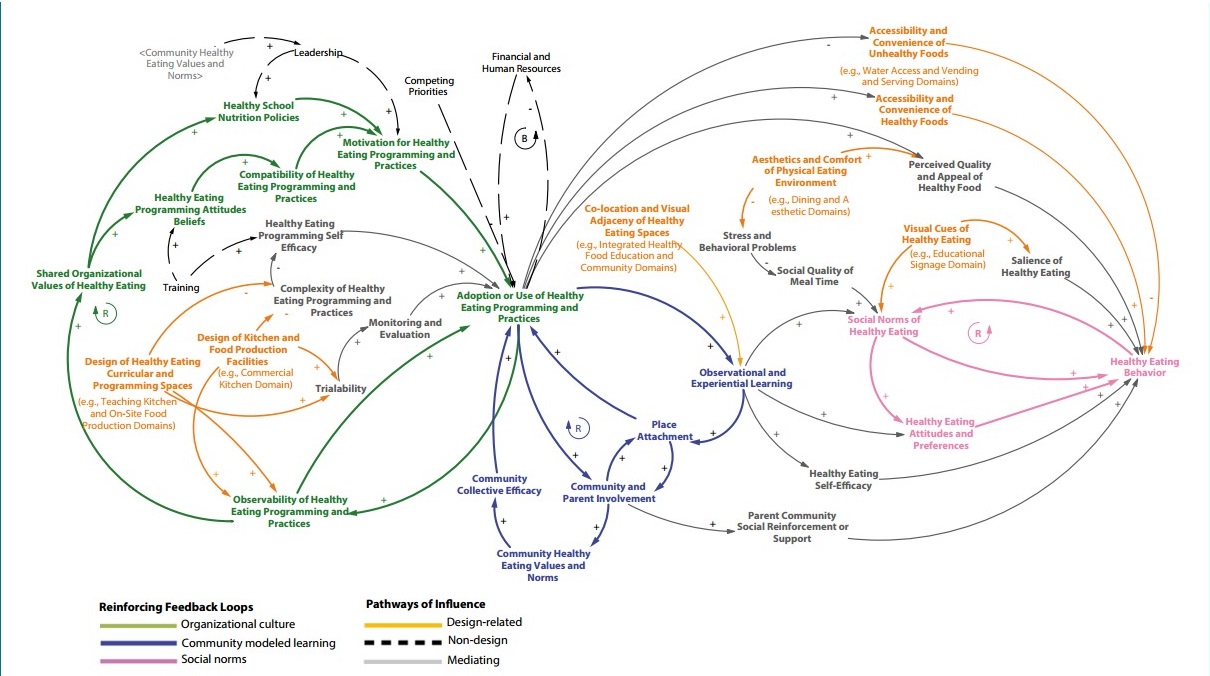With up to 50 percent of students’ daily energy intake occurring in the school building, schools are often the focus of targeted efforts to combat childhood obesity. Recent evidence has shown that although school-based nutrition education programs may contribute to healthier eating habits, these programs are not consistently effective on their own.
In response, an exciting area of research is emerging with a focus on the physical design of school building features, such as cafeterias, teaching gardens, or access to drinking water, and the impact it can have on healthy eating behaviors and attitudes. As this body of research expands, however, little work has been done to quantify, categorize, and analyze it.
In a first-of-its-kind systematic review, Frerichs et al. synthesize research on architecture and the design of the entire school setting and produce a clear analysis of the growing field of study. Published in the April 2015 edition of the American Journal of Public Health, “Influence of School Architecture and Design on Healthy Eating: A Review of the Evidence” consolidates 102 studies utilizing a systems lens, which considers interactions between spaces and occupants throughout the whole school. Frerichs et al. use multiple theoretical frameworks as well as the Healthy Eating Design Guidelines (HEDG), co-developed by NCCOR contributors Dr. Terry Huang and Dr. Matthew Trowbridge, to organize and assess the studies. The results of the systematic review are then used to construct a causal loop diagram providing a visualization of the numerous variables at play in the socio-environmental context of the school.
Frerichs et al. highlight numerous key findings:
- The physical environment, as seen through HEDG spatial domains, plays an important role in school-based healthy eating intervention.
- The largest body of evidence focuses on serving and water access and vending machine domains.
- More evaluation is needed on cooking and gardening programs, on-site food production, educational signage, wayfinding, marketing domain, and aesthetics and dining. Future studies should also test and determine the most relevant and effective messages (which will likely differ by age and race/ethnicity).
- Multiple, interacting pathways influence healthy eating in the context of the whole school.
- With multiple interacting pathways contributing to healthy eating outcomes, major barriers (e.g., organizational policies and insufficient financial resources) can arise that inhibit significant change. If those barriers can be overcome, powerful feedback loops can be triggered and positive change can occur.
“This is a first of its kind comprehensive assessment of multi-disciplinary school design research focused on promotion of healthy eating,” said Dr. Matthew Trowbridge, a co-author of the study. “Researchers can use our findings to further explore the integration of architecture and design on healthy eating to inform future research, policy, and practice.”
This systematic review reinforces that many complex physical, cognitive, and economic factors influence eating behavior in the school setting. Through a comprehensive study of the expanding body of healthy eating design and architecture literature, the authors demonstrate how a systems understanding and approach to a school facility’s physical design can play a crucial role in improving healthy eating behavior. Read the article here.
For more information on Health and the Built Environment, watch this short video on the Buckingham Schools Renovation Project and hear how investing in communities can transform lives. You can also take a look at the project’s website.

